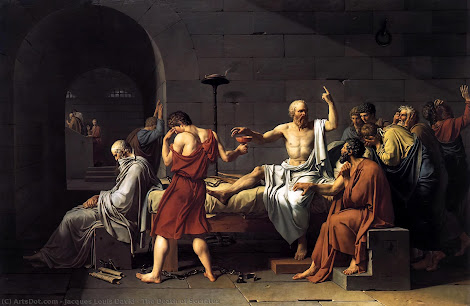Paul's Post 4/25/24 Persian art across time
I chose to cover Persian art for my non-Western art exhibit because I am attracted to the variety of Persian art through various periods. From the ancient artifacts of the Iron Age to the creations of the Qajar dynasty, Persian art offers a captivating journey through time.
Luristan Bronzes are seen dating anywhere from 1000-650 BC and offer a great glimpse into early Persian art, showcasing ancient Iran's cultural and artistic heritage. Composed largely during the Iron Age, these artifacts display an impressive proficiency in metalworking and a rich aesthetic sense. With detailed designs and beautiful detailing, Luristan Bronzes take the shape of various objects such as ceremonial vessels, weapons, and ornamental pieces. They often reflect their makers' societal and religious beliefs, providing insights into the era's daily life and artistic trends. Not only do these pieces offer an excellent example of Persian artistry, but they also showcase the socio-cultural dynamics of ancient Iran.
Another of my favorite examples of the artistry of ancient Persia, Persian epigraphic pottery dates predominantly from the 9th-13th centuries AD. These ceramic dishes have intricate inscriptions and calligraphy that often contain verses from Persian poetry or the Persian religious text Avesta. Crafted with careful detail, the elaborate writing serves as both decoration and as a means of conveying cultural and religious messages. Persian pottery takes several forms ranging from simple bowls and jars to elaborate ewers and tiles, each reflecting the influences and artistic innovations of their time. These artifacts not only shed light on the aesthetics of medieval Persian society but also provide valuable insights into its language and religious practices, making them wonderful resources for scholars and enthusiasts alike.
The Qajar dynasty spanned from the 18th to the early 20th century and ushered in an art style that blends traditional Persian elements with European influences. Known for its sophistication, and diverse look, Qajar art spans various mediums including painting, architecture, and decorative arts. Qajar-era paintings as seen from the likes of masters like Muhammad Ghaffar, are renowned for their vibrant colors, detailed designs, and expressive compositions portraying courtly life, myths, and historical events. Architecture of this era flourished with the creation of grand palaces, mosques, and public buildings adorned with this elaborate artwork and calligraphy.
“Top for Standard | Iran | Iron Age III.” The Metropolitan Museum of Art, www.metmuseum.org/art/collection/search/327520. Accessed 27 Apr. 2024.
“Medieval Khurasan: Samanid Epigraphic Pottery.” Islamicceramics.ashmolean.org, islamicceramics.ashmolean.org/Samanids/intro.htm.
“Qajar Portraits in 19th-Century Iran.” Apollo Magazine, 2 June 2018, www.apollo-magazine.com/how-the-qajar-dynasty-turned-persian-art-on-its-head/.
.JPG)




Comments
Post a Comment